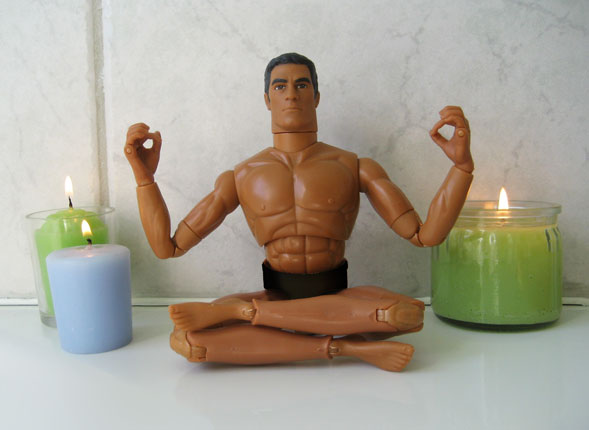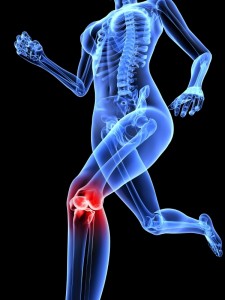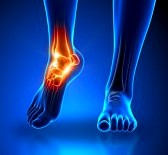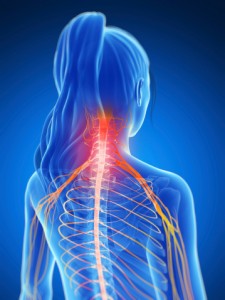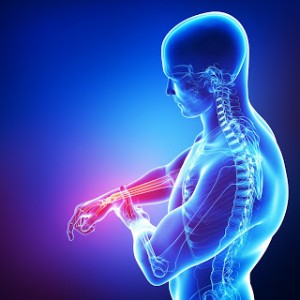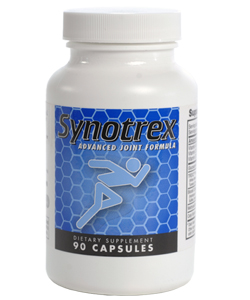In our prior post, Have a Testosterone Boosting Three Way: Part 1, we covered the first step in naturally increasing testosterone levels – DIET.
I promised a post that shows a 3-step plan to help boost testosterone naturally. This formula has been successful for many guys, including myself, over the years. For some, it doubled their T levels within a 90-day period. We will cover this topic in a series of three posts so you get all the info without getting a migraine afterwards.
Testosterone levels are taking a nose dive. Studies have shown that the average male’s testosterone in today’s society is nearly 25% lower than in the 1980’s. Without the big T, men become infertile, impotent, docile, and weak.
The thing is, men’s testosterone levels in 2013 ranged from 270 – 1070 ng/dL. 100 years ago men’s testosterone levels were recorded to be between 800-2000 ng/dL!
 This means that the men with “low testosterone” 100 years ago would be considered men with high testosterone now. This is an alarming statistic. And the trend is continuing each and every year! It is estimated that over 14 million men currently suffer with low testosterone levels.
This means that the men with “low testosterone” 100 years ago would be considered men with high testosterone now. This is an alarming statistic. And the trend is continuing each and every year! It is estimated that over 14 million men currently suffer with low testosterone levels.
The SECOND STEP to increase T naturally is: SUPPLEMENTS
While there are probably hundreds of different supplements on the market claiming they raise testosterone levels, not all of them actually produce the results you see in their ads and websites.
Another factor is where are these supplements being sourced? Even when you’re taking a regular vitamin, let’s say vitamin C, it’s important that you get this from a reputable company that is providing a natural source. Even when a vitamin is marked “natural”, it only has to include 10% of the actual natural plant-derived ingredients. The other 90% could be synthetic.
This is an important factor since what you put into your body is crucial for your health and longevity. I’m going to take this a step further and quickly discuss six categories of nutrients used in the manufacturing of vitamin supplements.
1. NATURAL SOURCE – These include nutrients from vegetable, animal or mineral sources, but prior to being bottled, they undergo significant processing and refining.
2. NATURE-IDENTICAL SYNTHETIC – This includes nutrients completely manufactured in a lab with the molecular structure identical to the same nutrients occurring in nature. Manufacturers often prefer this process because of the cost and scarcity of natural resources. Most standard vitamin supplements on the market today are this type.
3. STRICTLY SYNTHETIC – These nutrients are manufactured in a lab and are different than the same nutrients found in nature. Synthetic vitamins can have the same chemical constituents, but have different chemical compositions.
4. FOOD CULTURED – These are actually my preferred source and what I generally purchase for myself. This involves the same process behind cultured foods like yogurt, kefir, miso, and sauerkraut. Nutrient supplements are often grown in yeast or algae. Culturing in and of itself creates nutrients and can make them more bio-available.
5. FOOD BASED – One kind of food based supplement is made by enzymatically reacting synthetic and natural vitamins with extracts containing vegetable proteins and then making this into a supplement. This is not food cultured, because the nutrients are not grown into a whole food, as in the yeast/algae suspensions.
6. BACTERIAL FERMENTATION – This includes nutrients produced by genetically altering bacteria. Genetically altered bacteria can produce nutrient by-products.
One thing I’m going to say again, popping a few vitamins isn’t going to magically increase your T levels. This is a 3-part program. If you’re eating garbage and not exercising, no amount of supplements is going to help your testosterone levels reach optimal levels.
VITAMINS & MINERALS THAT NATURALLY BOOST T LEVELS
 – Vitamin D3. Vitamin D3 actually isn’t a vitamin, it’s a hormone — a really important hormone that provides a whole host of health benefits. Our bodies can naturally make vitamin D from the sun, but recent studies have shown that many Westerners are vitamin D3 deprived because we’re spending less and less time outdoors. When we do decide to venture outside, we slather our bodies with sunscreen, which prevents the sun reaching our skin to kick-off vitamin D3 production. If you’re not getting enough sun, you may have a vitamin D3 deficiency, which may contribute to low T levels. Studies have shown that men who take this supplement see a boost in their testosterone levels. Because I live in the Pacific Nortwest — and the sun isn’t out most of the year — I take 10,000 IU of vitamin D3 in the morning and could probably take more. Tim Ferris from the 5 hour body recommends 6,000 IU upon waking and 6,000 IU at night. Keep in mind that it may take someone already deficient 6 months to return to baseline levels.
– Vitamin D3. Vitamin D3 actually isn’t a vitamin, it’s a hormone — a really important hormone that provides a whole host of health benefits. Our bodies can naturally make vitamin D from the sun, but recent studies have shown that many Westerners are vitamin D3 deprived because we’re spending less and less time outdoors. When we do decide to venture outside, we slather our bodies with sunscreen, which prevents the sun reaching our skin to kick-off vitamin D3 production. If you’re not getting enough sun, you may have a vitamin D3 deficiency, which may contribute to low T levels. Studies have shown that men who take this supplement see a boost in their testosterone levels. Because I live in the Pacific Nortwest — and the sun isn’t out most of the year — I take 10,000 IU of vitamin D3 in the morning and could probably take more. Tim Ferris from the 5 hour body recommends 6,000 IU upon waking and 6,000 IU at night. Keep in mind that it may take someone already deficient 6 months to return to baseline levels.
– Omega-3 Fish Oil (EPA and DHA). First and foremost, I’m very picky with my fish oil. I only buy wild caught and make sure it contains low mercury and heavy metals. Fish oil has been shown to lower SHBG and increase production of Luteinizing Hormone (the hormone responsible for triggering the testes to produce T). You want to make sure you have enough of the “good” fats to clear the gunk out of your blood. hey have been shown to reduce triglyceride levels while providing your body with the fat it needs to produce testosterone. Fish oil is also known to help improve mood, which is a nice bonus.
– Zinc. Studies on zincs supplementation suggest that zinc plays an important part in regulating serum testosterone levels in healthy men. Zinc is one of the most common mineral deficiencies in western countries, and even a mild zinc deficiency lowers sex drive, limits muscle gain potential, causes weight gain and hurts energy levels. Zinc is also a powerful aromatase inhibitor that will greatly reduce the conversion of testosterone to estrogen in the body.
– Magnesium. Magnesium deficiency is another widespread problem in our country. While this makes you prone to stress and muscle cramps, it also starves your body’s endocrine system of a vital mineral it needs for testosterone production. We wrote another article on how magnesium alone can send your testosterone levels through the roof. You have to check it out. Aim to get 400 mg daily.
– Vitamin C. Vitamin C reduces cortisol in your body. This is a very good thing. Less cortisol = more ability to produce testosterone and vice versa. So taking your vitamin C, along with de-stressing, will promote a natural anabolic environment in your body. Aim for 1,000 mg daily.
 – Vitamin A. Vitamin A has been shown to increase testosterone levels in men by means of the suppression of estrogen levels. When your estrogen levels are high this causes a decrease in testosterone production. Blocking this production with Vitamin A will allow your testosterone to flourish.
– Vitamin A. Vitamin A has been shown to increase testosterone levels in men by means of the suppression of estrogen levels. When your estrogen levels are high this causes a decrease in testosterone production. Blocking this production with Vitamin A will allow your testosterone to flourish.
– ZMA. Since Magnesium and Zinc both raise your test levels, it makes sense that taking a combination supplement like ZMA will work for you. The collaboration of these two supplements has been proven to increase the deepness of your REM cycles, which will raise your testosterone levels.
– DHEA. One alternative to straight testosterone replacement is to boost the levels of the hormones that stimulate testosterone production instead. DHEA, for example, is a “parent hormone” made in the adrenal gland and testes, which changes into testosterone in men and estrogen in women. One solution to low testosterone is DHEA supplements, which naturally raise the body’s serum androstenedione levels with is a 19-carbon steroid hormone that is an intermediate step in the biochemical pathway that produces the androgen testosterone and the estrogens estrone and estradiol. A DHEA clinical study found that DHEA supplementation significantly increased strength and lean body mass.
– Tribulus Alatus (T-Alatus). Not to be confused with its relative, Tribulus Terrestris, this special herb was proved in a study to significantly increase the level of free serum testosterone. Tribulus Alatus is also great for muscle building and strength enhancement.It also boosts your immune support from its high antioxidant qualities. Tribulus Alatus is said to be slightly more effective than Terrestris because it contains 6 unique steroidal saponins. The dosage is in the range of 350mg to 500mg. Also, make sure is it pure Alatus and not a scaled down extract version.
– Allicin Garlic. In a garlic clinical study found that garlic supplementation increases testicular testosterone and decreases plasma corticosterone. During the study, diets with different protein levels were tested to conclude that garlic boosts testosterone on a high protein diet.
– Vitamin E. One vitamin E clinical study found that after oral vitamin E supplementation, normal male subjects had a significant rise in basal plasma testosterone. The results concluded that vitamin E may play and important role in hormone production in the pituitary-gonadal area in humans.
NATURAL HERBS THAT NATURALLY BOOST T LEVELS
– Tongkat Ali Extract – Tongkat ali extract is both clinicaly proven to increase your testosterone levels through the production of leydig cells, and to increase your free testosterone levels by means of lower SHGB levels. This way, you are available to use all the hard earned testosterone you are producing with the steps above. (See all these studies and more here). It is one of the most easily faked supplements on the web, so make sure you are getting tongkat ali extract and not tongkat ali root powder. They look exactly the same. The extract strength is best at 1:200 and it has to be from Indonesia.
NATURAL SUPPLEMENT THAT NATURALLY BOOSTS T LEVELS
– D-Aspartic Acid. D-aspartic acid is all the rage in bodybuilding right now. It is an amino acid that has a dramatic effect on your testosterone levels. Many users report seeing a rise in testosterone of 33% in as fast as two weeks while using 3,000 mg a day. How it work’s is it helps your body convert cholesterol and its natural resources into testosterone. One supplement I would recommend for this is TestoFuel. With 2300 mg of D-Aspartic Acid, it also contains 5,000 IU of D3, 200 mg of Magnesium, and 10 mg of Zinc.
PROTECT YOUR ORGANS
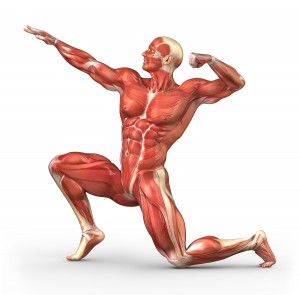 Lastly, when you’re boosting your T levels, it’s important to take care of two main organs that are helping the testosterone conversion: Liver and Kidneys. There are three main supplements I suggest to aid with your liver and kidney health. You will thank yourself later for taking extra good care of these guys.
Lastly, when you’re boosting your T levels, it’s important to take care of two main organs that are helping the testosterone conversion: Liver and Kidneys. There are three main supplements I suggest to aid with your liver and kidney health. You will thank yourself later for taking extra good care of these guys.
– Dandelion. Herbalists use dandelion root to detoxify the liver and gallbladder, and dandelion leaves to support kidney function. Dandelion leaves act as a diuretic and increase the amount of urine produced by the body, supporting kidney function. Dandelion leaves are also used to stimulate the appetite and aid digestion.
– Milk Thistle. Today, milk thistle is still one of the most commonly used medicinal plants in the world and is also the number one recommended natural herb for liver health. In fact,in Europe, milk thistle is a prescribed medication. The milk thistle extract is prescribed to treat mushroom poisoning, alcoholic cirrhosis, chronic hepatitis, drug and alcohol-induced liver damage and acute viral hepatitis, just to name a few.
– Tumeric. This yellow root—a cousin of ginger—is a powerful liver protector and even liver cell regenerator. It not only helps stimulate enzymes responsible for flushing out toxins (including known carcinogens) from the body, but UCLA research found that turmeric is capable of combating the effects of carcinogens.
Stay tuned for part 3. Until then, live well and be well.
Written by: Tristan “Lucky”




